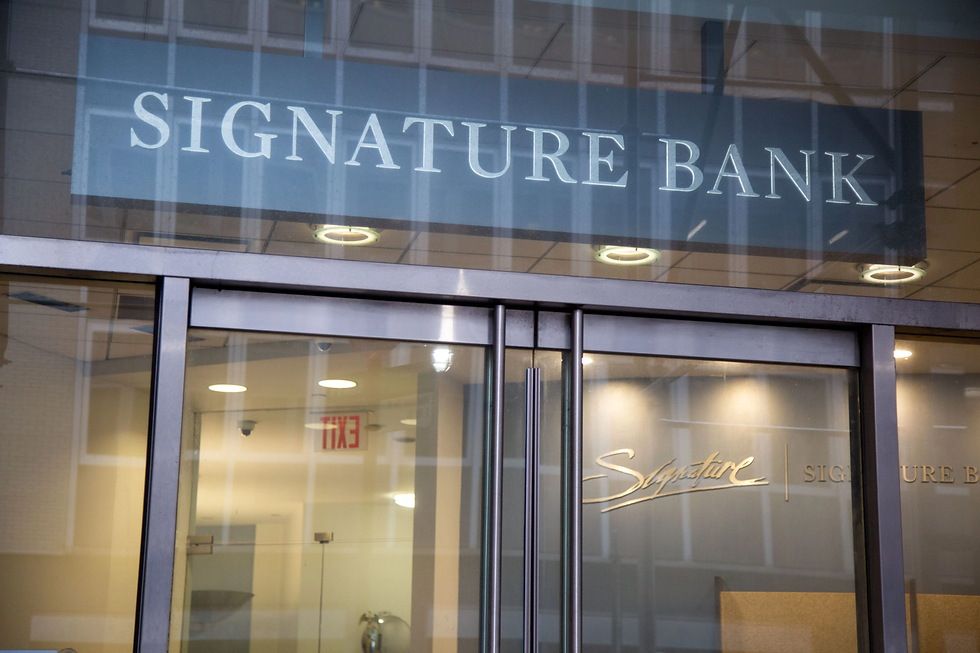The two largest bank failures since the Great Financial Crisis were preceded by extensive studies from the Federal Reserve and Federal Deposit Insurance Corp on what went wrong and where their supervisors failed.

Furthermore, it is now evident that early AML and compliance problems were warning signs that the banks were moving in the wrong direction.
A financial risk expert named Mayra Rodriguez Valladares who teaches regulators and bankers made the following observation about SVB: "Reading the report, one can wonder how this bank did not fail before. I was not surprised the Fed had warned SVB about its poor interest rate risk management."
"What is more of a surprise is the Fed had also warned SVB about IT, operational risk, internal audit and even problems with Current Expected Credit Loss measurements, considering the Fed and the California regulator knew SVB had poor compliance and internal controls with the Bank Secrecy Act and anti money laundering back in 2016."
"Clearly, bank examiners and off-site supervisors were not empowered to bring these issues to decision makers at the Fed to act. The former administration seemed eager to undo Dodd-Frank Act"
The government's post-mortem reports, which highlight management shortcomings at Silicon Valley Bank and Signature Bank as well as too-slow, too-soft responses by regulators, are summarized here:
- In ways that senior leaders and its board of directors were unaware of, SVB was "acutely exposed" to threats from increasing interest rates and diminishing technology sector activity. According to the Fed's study, the Santa Clara, California-based bank failed its own internal liquidity stress tests.
- According to the U.S. central bank, SVB did not evaluate its ability to borrow via the discount window in 2022 and lacked the necessary operational and collateral arrangements to acquire contingency funding.
- Following a June 2022 special risk report, the Fed added SVB to a list of banks with the greatest ratio of unrealized losses to common equity tier 1 capital.
- According to the FDIC, poor management was the main reason behind Signature's bankruptcy. The board of directors and management of the New York-based bank pushed "rapid, unrestrained growth" without effective risk management.
- Signature misunderstood the dangers posed by its dependence on deposits from the cryptocurrency industry. According to the FDIC, $17.6 billion in deposits left Signature last year, with around 62% of those deposits being associated with digital assets.
- According to the regulator, the FDIC was considering taking two additional enforcement actions relating to deficiencies in its requirements preventing money laundering and upholding sanctions, as well as one linked to persistent risk management flaws.
- According to the FDIC, it notified the board of directors of Signature Bank in a letter dated March 11 that it will take formal enforcement action against the institution as a result of management's subpar response to the bank's "precipitous decline."
- After the 2018 legislative rollback of banking regulations, the Fed's culture shifted. Staff members who were interviewed cited pressure to lighten the burden on banks and give more evidence for their decisions as a factor in this shift toward laxer oversight.
- The Fed's assessments of SVB were "not always appropriate" in light of the bank's flaws. In one instance, despite early indications that management and board oversight needed improvement, SVB's governance and controls weren't rated to inadequate until August 2022.
- Fed supervisors debated reviewing the interest-rate risk associated with SVB in 2022 but ultimately chose to postpone it until the third quarter of 2023 in favor of other examinations.
- Fed authorities at first suggested that SVB's 2022 request to invest in its London subsidiary be denied because of supervisory issues, but they later abandoned their concerns.
- The FDIC’s communication of exam results to Signature’s board was often not timely, and in some cases significantly delayed.
- Due to increasing weaknesses in corporate governance discovered starting in 2021, the FDIC could have downgraded Signature management's rating earlier, it claimed.
- Between 2016 and 2022, the number of employees at the Fed responsible for supervision fell by 3%, despite a 37% increase in banking sector assets.
- The amount of resources the Fed allotted to overseeing regional banks "proved insufficient." The bank's interest-rate risk, investment portfolio, and occasionally liquidity and model risk management were all examined by a single examiner over the course of a two- to three-week period.
- The FDIC was unable to fully staff an exam team focused on Signature from 2017 to 2023.
- According to the FDIC, shortage of exam staff is a "mission-critical risk", particularly in the New York area. Since 2020, 40% of the significant bank supervision positions in the New York region have either been empty or occupied by temporary employees.
By fLEXI tEAM
.png)
.png)


Comments